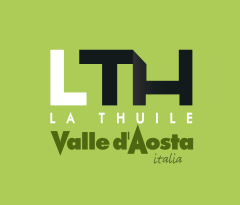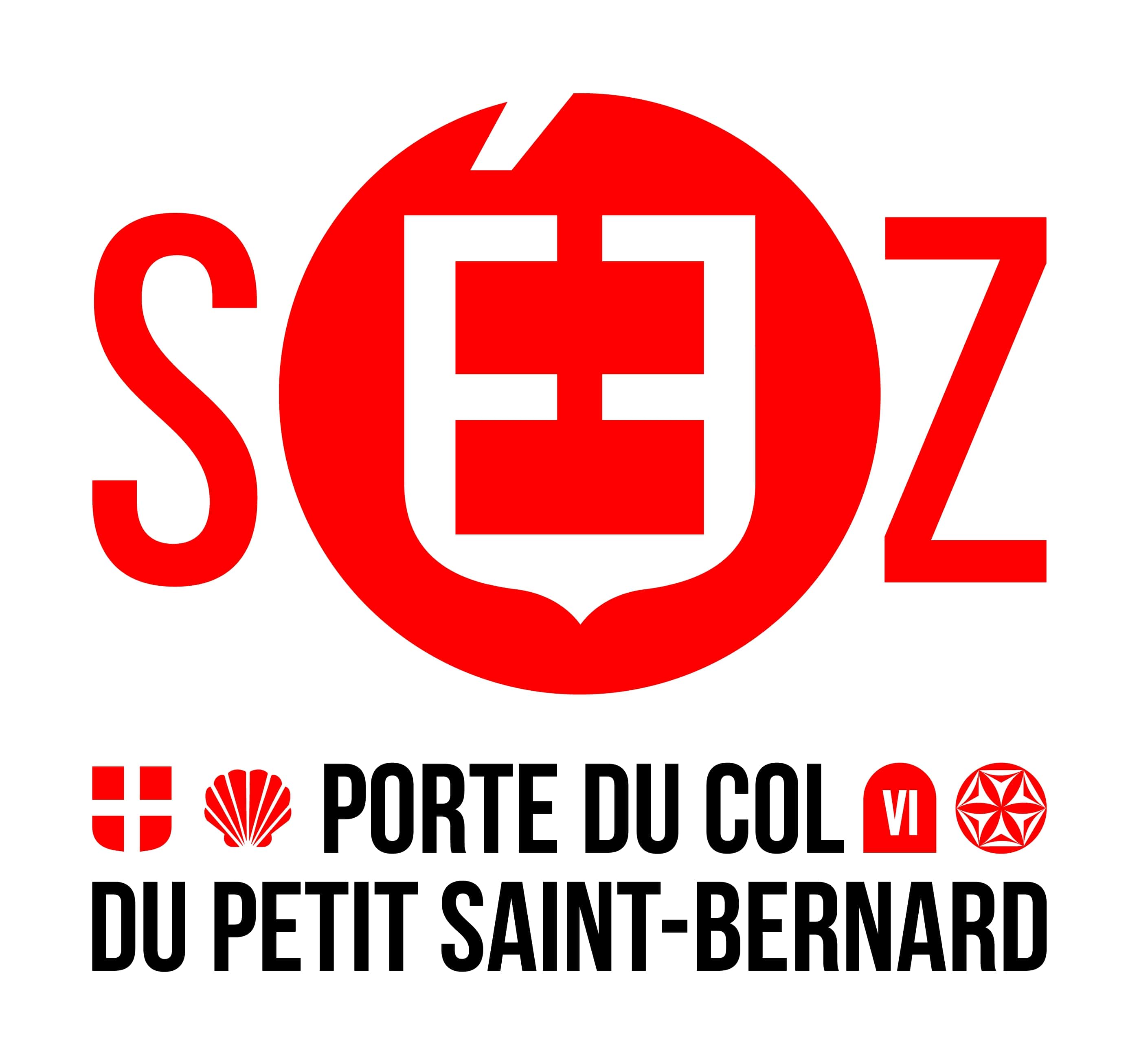Path of memory
Path of memory
Easy
Difficulty1h
Duration2,8km
Distance+85m
Positive Elevation-83m
Negative ElevationEmbed this item to access it offline
The Path of Memory is an easy circular itinerary that touches on the main points of historical interest on the Petit St Bernard Pass.
The walk takes place in the embrace of high-altitude nature and allows you to discover testimonies left by the peoples who lived there more than 2000 years ago, signs of historical events and traces left by people who tell of a place that opened the way through the mountains towards Gaul.
The walk takes place in the embrace of high-altitude nature and allows you to discover testimonies left by the peoples who lived there more than 2000 years ago, signs of historical events and traces left by people who tell of a place that opened the way through the mountains towards Gaul.
Description
Leaving the car at the car park near the old Italian customs post (2198 m), take the path parallel to state road 26 in a south, south-west direction, following the panels, metal templates and statues. After passing the Mansio and crossing the Cromlech, continue in the direction of the Ospizio (2164 m) along the beautiful plain of the Little St. Bernard Pass. Once at the hospice, continue along a section of state road 26 in the direction of Italy for about 100 metres and once you reach the small dirt car park, take the path on the right that leads to the Abbot Chanoux Chapel. Follow the path to the back of the Chanusia Alpine Botanical Garden, slightly uphill until you reach the farm road at an altitude of 2243 metres. Follow the road for about 80 metres then take the path to the left that leads downhill to the buildings of the old French customs house. From here, along the outward route, return to the starting point.
12 points of interest

Small patrimony
Monument to ex-deportees
Monument to ex-deportees

Small patrimony
The Roman Mansio
Almost 2000 years ago, a large manse stood in this place of great passage to give hospitality to merchants, soldiers and travellers travelling along the busy road to Gaul. The route was dotted with stopping points and the Mansio at the Petit St Bernard Pass was one of the largest and most important, as well as the highest.
All that remains today of this imposing construction is the foundation perimeter, which gives an idea of how the complex was laid out: there were 12 cells for travellers, stables for horses and mules, courtyards and common areas, storehouses, and a temple dedicated to the god Jupiter. There were two entrances: one to the south-east, which corresponded to the rear of the building, and one to the north-west, which gave onto the Via delle Gallie, separated by another building across the road that served as a warehouse for goods and duties.
The roof of the Mansio was initially made of simple thatch bundles obtained from the remains of mowing the meadows and wheat fields (at that time the climate was milder and it was possible to cultivate at altitude and to travel all year round) and later of slabs of slate, obtained from a local quarry, located just beyond the natural watershed descending towards the Tarentaise.
All that remains today of this imposing construction is the foundation perimeter, which gives an idea of how the complex was laid out: there were 12 cells for travellers, stables for horses and mules, courtyards and common areas, storehouses, and a temple dedicated to the god Jupiter. There were two entrances: one to the south-east, which corresponded to the rear of the building, and one to the north-west, which gave onto the Via delle Gallie, separated by another building across the road that served as a warehouse for goods and duties.
The roof of the Mansio was initially made of simple thatch bundles obtained from the remains of mowing the meadows and wheat fields (at that time the climate was milder and it was possible to cultivate at altitude and to travel all year round) and later of slabs of slate, obtained from a local quarry, located just beyond the natural watershed descending towards the Tarentaise.

Small patrimony
The Cromlech
The word cromlech derived from the Celtic language (crom means circle and lech means stones) describes exactly what it means: 46 stelae are aligned in a slightly elliptical circle with a diameter of 84x72 metres. Each stele is embedded in the ground at a distance of about 3-4 metres from the others.
This sacred place was created by the Celts at a time around 2700 years ago, when the 'cult of the stones' was practised. In Tir Na Mor Art (Terra Della Grande Orsa, the Land of the Great Bear, the Valle d'Aosta of Celtic times), Vestals and Druids were at home, who studied celestial phenomena and practised rituals here.
The cromlech is oriented with the Summer Solstice: on the longest days of the year when the sun turns to set, the shadow of the two peaks behind the Sacred Circle is reflected on the ground and embraces its perimeter, leaving only the centre of the circle to the sun.
Wars and atmospheric adversities have led to the gradual degradation of this place. Consider that from 1856 to 2012, the Hill Road cut through the Cromlech exactly in the middle and a dozen or so stelae were removed, which to the ancient Salassi would have been a horrible sacrilege!
This sacred place was created by the Celts at a time around 2700 years ago, when the 'cult of the stones' was practised. In Tir Na Mor Art (Terra Della Grande Orsa, the Land of the Great Bear, the Valle d'Aosta of Celtic times), Vestals and Druids were at home, who studied celestial phenomena and practised rituals here.
The cromlech is oriented with the Summer Solstice: on the longest days of the year when the sun turns to set, the shadow of the two peaks behind the Sacred Circle is reflected on the ground and embraces its perimeter, leaving only the centre of the circle to the sun.
Wars and atmospheric adversities have led to the gradual degradation of this place. Consider that from 1856 to 2012, the Hill Road cut through the Cromlech exactly in the middle and a dozen or so stelae were removed, which to the ancient Salassi would have been a horrible sacrilege!

Small patrimony
The bunkers of the Second World War
This military construction was part of the Western portion of the Alpine Wall, a series of defensive military structures that spanned the entire Alpine arc. This particular post was known as the Vallo Alpino del Littorio (Littoria refers to the name of La Thuile in fascist times).
The two entrances and a cast-iron canopy that served as an observatory are still visible. It is small and designed for two people armed with machine guns and a firing sight of four directions.
All the defences and barricades built at the Petit Saint Bernard Pass were intended to stop a French advance during the Second World War, which affected these territories more than other areas because the passage here was easier.
In the second half of the 1930s, the construction of new fortifications and the modernisation of existing ones began. Anti-tank defence structures were installed on both sides of the road, in correspondence with the natural watershed of the Col; subsequently, numerous other defenses were installed, such as bivouacs, artillery observatories, bunkers, the Chaz Duraz and Monte Belvedere forts, and the Ridotta della Traversette.
Around mid-August 1939, when the winds of war started to blow more strongly, a contingent of soldiers was sent to reinforce the border. Hostilities on the Petit-Saint-Bernard Pass took place between 21 and 24 June 1940.
The two entrances and a cast-iron canopy that served as an observatory are still visible. It is small and designed for two people armed with machine guns and a firing sight of four directions.
All the defences and barricades built at the Petit Saint Bernard Pass were intended to stop a French advance during the Second World War, which affected these territories more than other areas because the passage here was easier.
In the second half of the 1930s, the construction of new fortifications and the modernisation of existing ones began. Anti-tank defence structures were installed on both sides of the road, in correspondence with the natural watershed of the Col; subsequently, numerous other defenses were installed, such as bivouacs, artillery observatories, bunkers, the Chaz Duraz and Monte Belvedere forts, and the Ridotta della Traversette.
Around mid-August 1939, when the winds of war started to blow more strongly, a contingent of soldiers was sent to reinforce the border. Hostilities on the Petit-Saint-Bernard Pass took place between 21 and 24 June 1940.

Panorama
The Hospice Plain
The Little St Bernard Pass area is characterised by a large flat zone. Its origin derives from the shaping action of glaciers, which, combined with the characteristics of the rock and soil and the presence of streams, alpine lakes, peat bogs and small wetlands, has created a large area where it is easy to find herds of grazing cows in summer.
The tradition of taking the cows to graze in the alpine pastures, typically from St John's Day (24 June) to St Michael's Day (29 September), is very old and was already practised by the ancient Ceutron and Salassi peoples. The word 'alpe' itself derives from the Celtic language.
The climate in the past was milder and the hill was frequented continuously; a particularly hardy variety of wheat could be cultivated and grazing took place for many more months of the year.
In summer, the shepherds on both sides of the pass still meet in June to celebrate together the first opening of the pass at the thaw (the Pass-Pitchou festival), and in August at the Fête des bergers.
The tradition of taking the cows to graze in the alpine pastures, typically from St John's Day (24 June) to St Michael's Day (29 September), is very old and was already practised by the ancient Ceutron and Salassi peoples. The word 'alpe' itself derives from the Celtic language.
The climate in the past was milder and the hill was frequented continuously; a particularly hardy variety of wheat could be cultivated and grazing took place for many more months of the year.
In summer, the shepherds on both sides of the pass still meet in June to celebrate together the first opening of the pass at the thaw (the Pass-Pitchou festival), and in August at the Fête des bergers.

Small patrimony
The hospice
The word hospice describes a home where travellers can find board and lodging. That of the Petit St Bernard is linked to the figure of St Bernard, archdeacon of Aosta, who around 1050 had a hospice and church built and served by religious monks dependent on the monastery of St Peter in the Swiss Valais.
The hospice was entrusted in 1113 to the order of the monks of Saint-Gilles of Verrès. A new hospice was built at the behest of St Peter II, archbishop of Tarantasia, a little further south, in its present location. The building experienced alternating periods of decay and prosperity.
From 1752 its name was linked to the Order of Saints Maurice and Lazarus and the crusader emblem of the Mauritian Order appeared on the façade.
In 1860, Abbot Pietro Chanoux arrived and contributed to guaranteeing hospitality for 50 years, both in summer and winter. In 1920, the hospice set a record for the number of passages, over 21,000 of which more than 500 in winter!
During World War II, the building was devastated and lay in ruins for a long time. In 1985, cooperation between the Italian and French Rotary Clubs led to its rehabilitation, and since the summer of 1995, a renovated and equipped hospice has once again been the soul of the Petit St Bernard Pass.
The hospice was entrusted in 1113 to the order of the monks of Saint-Gilles of Verrès. A new hospice was built at the behest of St Peter II, archbishop of Tarantasia, a little further south, in its present location. The building experienced alternating periods of decay and prosperity.
From 1752 its name was linked to the Order of Saints Maurice and Lazarus and the crusader emblem of the Mauritian Order appeared on the façade.
In 1860, Abbot Pietro Chanoux arrived and contributed to guaranteeing hospitality for 50 years, both in summer and winter. In 1920, the hospice set a record for the number of passages, over 21,000 of which more than 500 in winter!
During World War II, the building was devastated and lay in ruins for a long time. In 1985, cooperation between the Italian and French Rotary Clubs led to its rehabilitation, and since the summer of 1995, a renovated and equipped hospice has once again been the soul of the Petit St Bernard Pass.

Small patrimony
Cromlech
The word cromlech derived from the Celtic language (crom means circle and lech means stones) describes exactly what it means: 46 stelae are aligned in a slightly elliptical circle with a diameter of 84x72 metres. Each stele is embedded in the ground at a distance of about 3-4 metres from the others.
This sacred place was created by the Celts at a time around 2700 years ago, when the 'cult of the stones' was practised. In Tir Na Mor Art (Terra Della Grande Orsa, the Land of the Great Bear, the Valle d'Aosta of Celtic times), Vestals and Druids were at home, who studied celestial phenomena and practised rituals here.
The cromlech is oriented with the Summer Solstice: on the longest days of the year when the sun turns to set, the shadow of the two peaks behind the Sacred Circle is reflected on the ground and embraces its perimeter, leaving only the centre of the circle to the sun.
Wars and atmospheric adversities have led to the gradual degradation of this place. Consider that from 1856 to 2012, the Hill Road cut through the Cromlech exactly in the middle and a dozen or so stelae were removed, which to the ancient Salassi would have been a horrible sacrilege!
This sacred place was created by the Celts at a time around 2700 years ago, when the 'cult of the stones' was practised. In Tir Na Mor Art (Terra Della Grande Orsa, the Land of the Great Bear, the Valle d'Aosta of Celtic times), Vestals and Druids were at home, who studied celestial phenomena and practised rituals here.
The cromlech is oriented with the Summer Solstice: on the longest days of the year when the sun turns to set, the shadow of the two peaks behind the Sacred Circle is reflected on the ground and embraces its perimeter, leaving only the centre of the circle to the sun.
Wars and atmospheric adversities have led to the gradual degradation of this place. Consider that from 1856 to 2012, the Hill Road cut through the Cromlech exactly in the middle and a dozen or so stelae were removed, which to the ancient Salassi would have been a horrible sacrilege!

Small patrimony
World War 2 bunker
This military construction was part of the Western Alpine Wall defending the Italian borders in the great defence project that spanned the entire Alpine arc. This particular post was known as the Vallo Alpino del Littorio (Littoria refers to the name of La Thuile in fascist times).
The two entrances and a cast-iron canopy that served as an observatory are still visible. It is small and designed for two people armed with machine guns with a firing view in four directions.
All the defences and barricades built at the Petit St Bernard Pass were intended to stop the French advance during the Second World War, which affected these territories more than other areas because the passage was easier here.
In the second half of the 1930s, the construction of new fortifications and the adaptation of existing ones began. Counter-tank defence structures were installed on both sides of the road, in correspondence with the natural watershed of the Col and subsequently numerous bivouacs, artillery observation posts, bunkers, the Chaz Duraz and Monte Belvedere forts and the Ridotta della Traversette.
Around mid-August 1939, when the winds of war began to blow strongly, a contingent of soldiers was sent to guard the borders and defend the homeland. On 1 September, war was declared and nothing was ever the same again...
The two entrances and a cast-iron canopy that served as an observatory are still visible. It is small and designed for two people armed with machine guns with a firing view in four directions.
All the defences and barricades built at the Petit St Bernard Pass were intended to stop the French advance during the Second World War, which affected these territories more than other areas because the passage was easier here.
In the second half of the 1930s, the construction of new fortifications and the adaptation of existing ones began. Counter-tank defence structures were installed on both sides of the road, in correspondence with the natural watershed of the Col and subsequently numerous bivouacs, artillery observation posts, bunkers, the Chaz Duraz and Monte Belvedere forts and the Ridotta della Traversette.
Around mid-August 1939, when the winds of war began to blow strongly, a contingent of soldiers was sent to guard the borders and defend the homeland. On 1 September, war was declared and nothing was ever the same again...

Small patrimony
Roman mansio
Almost 2000 years ago, the Petit St Bernard Pass was a place of great passage along the busy road to Gaul. In order to provide hospitality to merchants, soldiers and travellers on their way, a large manse was built, a stopping point considered to be among the largest and most important of the time, as well as the highest.
All that remains today of this imposing construction is the foundation perimeter, which gives an idea of how the complex was laid out: there were 12 cells for travellers, stables for horses and mules, courtyards and common areas, storehouses, and a temple dedicated to the god Jupiter.
There were two entrances: one to the south-east, which corresponded to the rear of the building, and one to the north-west, which gave onto the Via delle Gallie, separated by another building across the road that served as a warehouse for goods and duties.
The roof of the Mansio was initially made of simple thatched bundles obtained from the remains of mowing the meadows and wheat fields (at that time the climate was milder and it was possible to cultivate at altitude and to travel all year round) and later of slabs of slate, obtained from a local quarry, located just beyond the natural watershed descending towards the Tarentaise.
All that remains today of this imposing construction is the foundation perimeter, which gives an idea of how the complex was laid out: there were 12 cells for travellers, stables for horses and mules, courtyards and common areas, storehouses, and a temple dedicated to the god Jupiter.
There were two entrances: one to the south-east, which corresponded to the rear of the building, and one to the north-west, which gave onto the Via delle Gallie, separated by another building across the road that served as a warehouse for goods and duties.
The roof of the Mansio was initially made of simple thatched bundles obtained from the remains of mowing the meadows and wheat fields (at that time the climate was milder and it was possible to cultivate at altitude and to travel all year round) and later of slabs of slate, obtained from a local quarry, located just beyond the natural watershed descending towards the Tarentaise.

Lake
Verney lake
Lake Verney is the largest natural alpine lake in the Aosta Valley. Of glacial origin, it is located at an altitude of 2,088 m between the Bec des Rousses, a promontory of the Petit St Bernard, and Mount Chaz Dura.
The shores of the lake are colonised by hygrophilous vegetation that includes valuable botanical varieties such as eriophiles, sedges and rushes as well as sphagnum, a typical species of peat bogs. On the sides, the work of nature has left moraine deposits rich in resurgences, the perfect habitat for primroses and saxifrages.
In the distant past, over 2000 years ago, the people of Salasso considered these waters sacred: they were used to bless fields, unions and children, to propitiate a fruitful summer or a benevolent winter. When Salaxian leaders returned victorious from a battle, they offered the swords of their fallen adversaries to Graio, god of war and rocks, as a sign of thanks.
Today, Lake Verney is a favourite destination for many tourists as well as a fishing reserve. You can walk around its entire perimeter with a comfortable walk of about 45 minutes and by climbing further you can reach the Upper Verney Lake in about half an hour.
The shores of the lake are colonised by hygrophilous vegetation that includes valuable botanical varieties such as eriophiles, sedges and rushes as well as sphagnum, a typical species of peat bogs. On the sides, the work of nature has left moraine deposits rich in resurgences, the perfect habitat for primroses and saxifrages.
In the distant past, over 2000 years ago, the people of Salasso considered these waters sacred: they were used to bless fields, unions and children, to propitiate a fruitful summer or a benevolent winter. When Salaxian leaders returned victorious from a battle, they offered the swords of their fallen adversaries to Graio, god of war and rocks, as a sign of thanks.
Today, Lake Verney is a favourite destination for many tourists as well as a fishing reserve. You can walk around its entire perimeter with a comfortable walk of about 45 minutes and by climbing further you can reach the Upper Verney Lake in about half an hour.

Flora
The Chanousia
The history of the Chanousia Alpine Botanical Garden is linked to the figure of Abbé Chanoux. Appointed Rector of the Petit St Bernard Hospice in 1860, he remained there for 49 years until his death, deeply loving these places.
An expert mountaineer and great lover of natural sciences (particularly botany), he founded the 'Chanousia' alpine botanical garden on 29 July 1897, the name of which he still remembers today. The Abbot's aim was to cultivate some of the most beautiful and most endangered Alpine plant species, so that people could admire them and learn to know and respect them. When he died in 1909, Abbot Chanoux asked to be buried here and today rests in the chapel located a short distance from his beloved garden.
The garden is located on French territory and covers an area of about 10,000 square metres. The severe climatic conditions make the growing season very short and condition the plants present, which come from alpine and nival environments.
Today, around 1,200 species are planted, very few if one considers that at the height of its development in the 1940s, more than 2,500 species were cultivated there, not only from the Alps, but also from mountain systems all over the world, and the garden's fame was known in all scientific circles.
An expert mountaineer and great lover of natural sciences (particularly botany), he founded the 'Chanousia' alpine botanical garden on 29 July 1897, the name of which he still remembers today. The Abbot's aim was to cultivate some of the most beautiful and most endangered Alpine plant species, so that people could admire them and learn to know and respect them. When he died in 1909, Abbot Chanoux asked to be buried here and today rests in the chapel located a short distance from his beloved garden.
The garden is located on French territory and covers an area of about 10,000 square metres. The severe climatic conditions make the growing season very short and condition the plants present, which come from alpine and nival environments.
Today, around 1,200 species are planted, very few if one considers that at the height of its development in the 1940s, more than 2,500 species were cultivated there, not only from the Alps, but also from mountain systems all over the world, and the garden's fame was known in all scientific circles.

Small patrimony
Jupiter's Column
When St Bernard of Menthon joined the Canons of Aosta Cathedral in Anno Domini 1034, he was commissioned to build two new hospices for wayfarers: one along the road called Mont Joux (Colle del Gran San Bernardo) and one serving the road called Colonne Joux (Colle del Piccolo San Bernardo).
When St Bernard arrived in these places, he found many pagan temples. One of these stood just beyond the Cromlech and consisted of a shrine and an outer triple colonnade. On the highest of the columns stood a magnificent stone of a deep red colour that had the power to catch the light of the dying sun on Equinox day, creating glare over much of the esplanade of the Hill. Called the Eye of Gaius and later the Eye of Jupiter, it had been positioned in the time of the Salassi to worship their deities. According to legend, it was St Bernard himself who suppressed this pagan symbol by destroying the stone. First a simple iron cross was placed in its place, then a statue of the saint.
This temple, of which only the foundations remain today, was discovered in the 1930s during one of the first excavation campaigns on the Hill. Numerous artefacts came to light (now on display in the Regional Archaeological Museum in Aosta), including silver plaques, coins, a votive plaque dedicated to Hercules and a silver bust depicting Jupiter Graiocelo.
When St Bernard arrived in these places, he found many pagan temples. One of these stood just beyond the Cromlech and consisted of a shrine and an outer triple colonnade. On the highest of the columns stood a magnificent stone of a deep red colour that had the power to catch the light of the dying sun on Equinox day, creating glare over much of the esplanade of the Hill. Called the Eye of Gaius and later the Eye of Jupiter, it had been positioned in the time of the Salassi to worship their deities. According to legend, it was St Bernard himself who suppressed this pagan symbol by destroying the stone. First a simple iron cross was placed in its place, then a statue of the saint.
This temple, of which only the foundations remain today, was discovered in the 1930s during one of the first excavation campaigns on the Hill. Numerous artefacts came to light (now on display in the Regional Archaeological Museum in Aosta), including silver plaques, coins, a votive plaque dedicated to Hercules and a silver bust depicting Jupiter Graiocelo.
Altimetric profile
Recommandations
The route is circular and can be started at any point.
Access and parking
The route is located at the Piccolo San Bernardo pass (2188 m) at the state border.
Arriving from Italy: SS 26 of Valle d'Aosta, 13 km after the village of La Thuile.
Coming from France: D1090, 8 km after the village of La Rosière.
The pass is closed to traffic in winter (mid-November-end of May).
The route is circular and can be taken at any point. As you walk along it in any direction, you will come across a series of characters (statues and metal silhouettes) that provide textual information on the various places that have featured them at various times.
Arriving from Italy: SS 26 of Valle d'Aosta, 13 km after the village of La Thuile.
Coming from France: D1090, 8 km after the village of La Rosière.
The pass is closed to traffic in winter (mid-November-end of May).
The route is circular and can be taken at any point. As you walk along it in any direction, you will come across a series of characters (statues and metal silhouettes) that provide textual information on the various places that have featured them at various times.
Parking :
old Italian customs house or hospice on French territory
Report a problem or an error
If you have found an error on this page or if you have noticed any problems during your hike, please report them to us here:
 Ufficio del Turismo / Office du Tourisme La Thuile
Ufficio del Turismo / Office du Tourisme La Thuile  Office de Tourisme Séez
Office de Tourisme Séez  Office du Tourisme de la Rosière Montvalezan
Office du Tourisme de la Rosière Montvalezan Espace San Bernardo ski
Espace San Bernardo ski